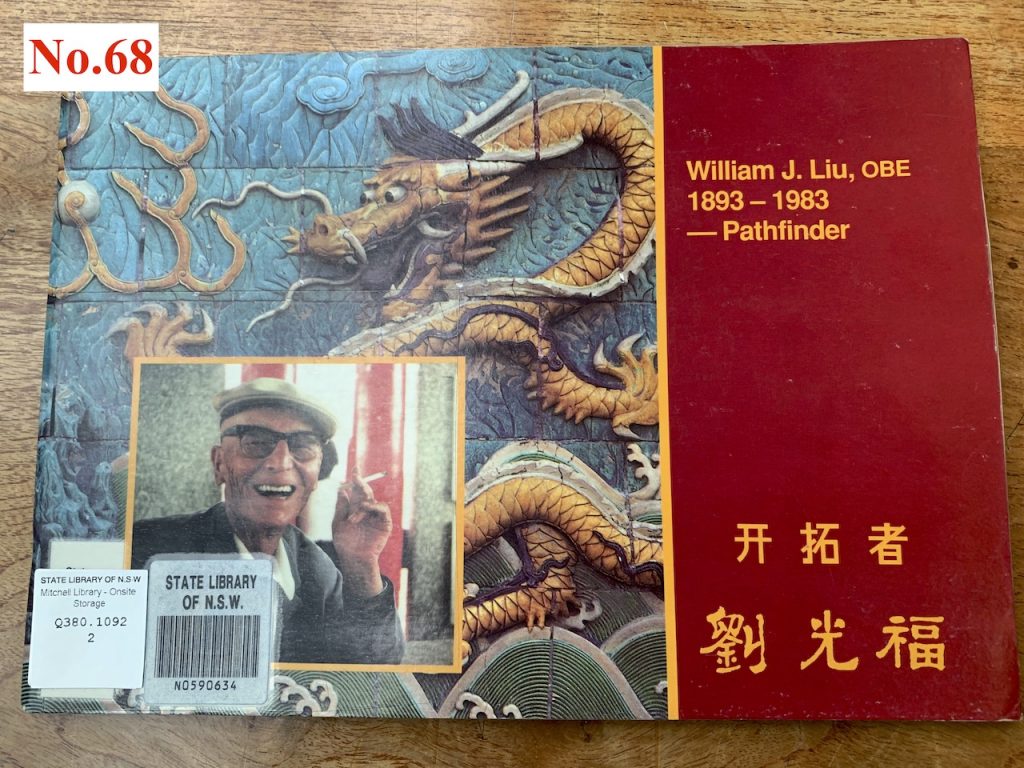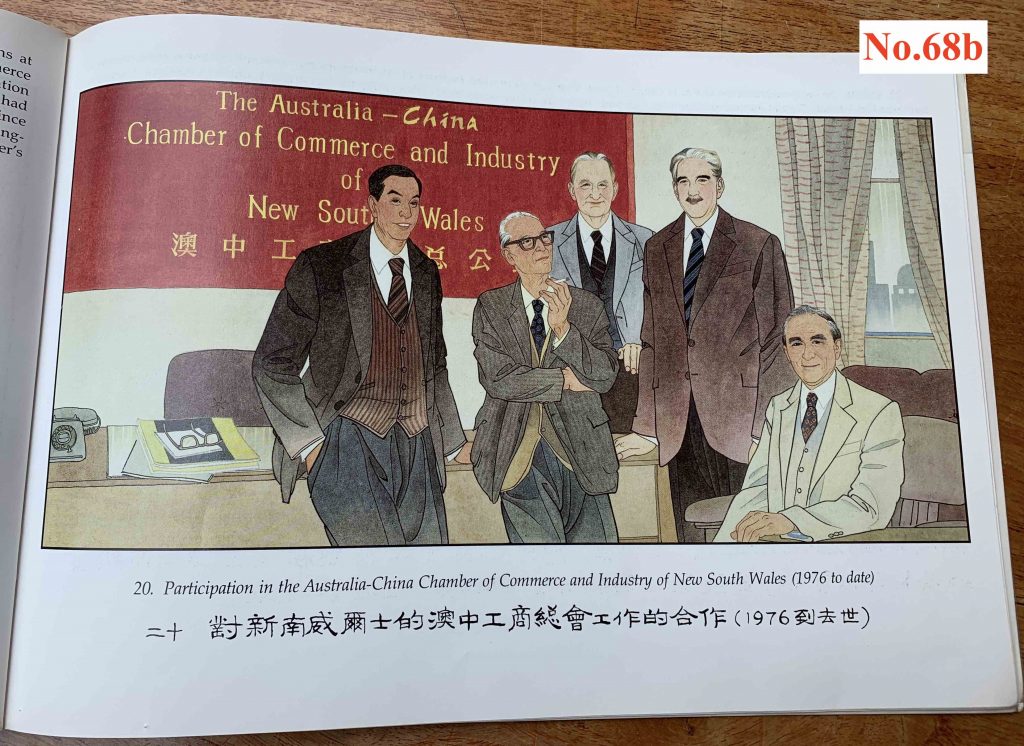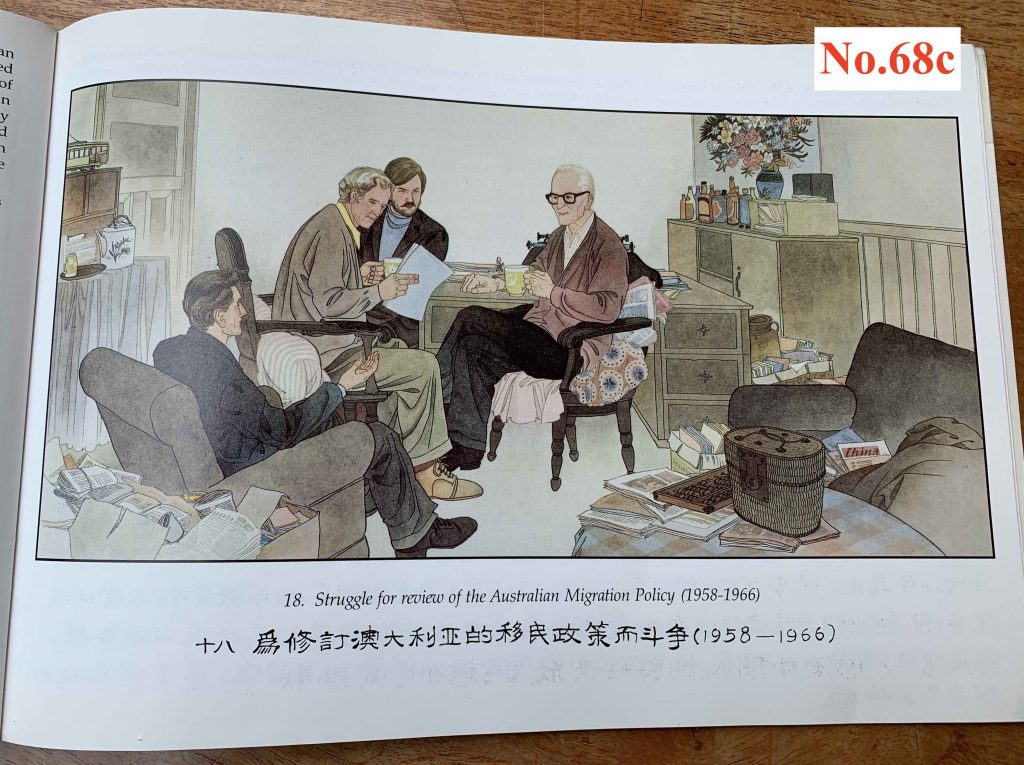
William J. Liu 1893 – 1983 – Pathfinder was commissioned by the Australia-China Chamber of Commerce and Industry of New South Wales and published in 1991. The book gives an outline of the life of prominent Chinese-Australian William Liu based on a 26 panel scroll series painted by the artist Xiangyi Mo. It is the original “Memorial Scrolls”, once exhibited around Australia, that is Object No.68 in this series. However, a most unusual feature of this object is that at the present time it is “missing”.
William Liu spent a great deal of his life lobbying to improve the status of people of Chinese heritage in Australia, often focusing on trade and other links with China itself as a way to achieve this. By the 1980s William Liu had lived long enough to see the death of the oppressive White Australia Policy and the first efforts at establishing strong economic ties with China. The Australia-China Chamber of Commerce and Industry of New South Wales of which he was the first Governor was part of this effort. In commemoration of William Liu’s efforts as a pathfinder in all this the artist who had created the Harvest of Endurance scroll for the Australia China Friendship Society was commissioned.

Unlike the Harvest of Endurance, which is now housed in the National Museum of Australia, the original scroll paintings that were the basis of the “Pathfinder” book seems to have disappeared. Neither the artist himself nor the descendants of William Liu know of the whereabouts of this object of significance in Chinese Australia history. Various likely repositories have also been reached out to, in particular the State Library of NSW, which contains the papers of both William Liu and of his son Dalton Gokbo Liu. But all to no avail.

Of course the loss of objects is all part of history and in fact is what makes the objects that do survive all the more valuable. The objects discussed in this project for example do not by any means represent an overview of Chinese Australian history in themselves. Rather they are a random collection of what has survived and what is accessible. In themselves they represent nothing until they are placed within their historical context. The life of William Liu is well known and we are not dependent on the scrolls for this knowledge, copies of which in any case are preserved in the book itself. Nevertheless the scrolls are a link to the efforts of the Chinese Australian community, at a time when William Liu’s long sought relationship with China was finally developing. They both celebrate the past and look forward to a better future.
That future is now here and is not perhaps one that would have pleased William Liu. Missing or not the scrolls represent a reminder of how the past shapes our future even as that future develops in unexpected ways.
Breaking News: The Australia-China Chamber of Commerce and Industry of New South Wales has been contacted and they are on the track of the missing scrolls. Stay tuned.

